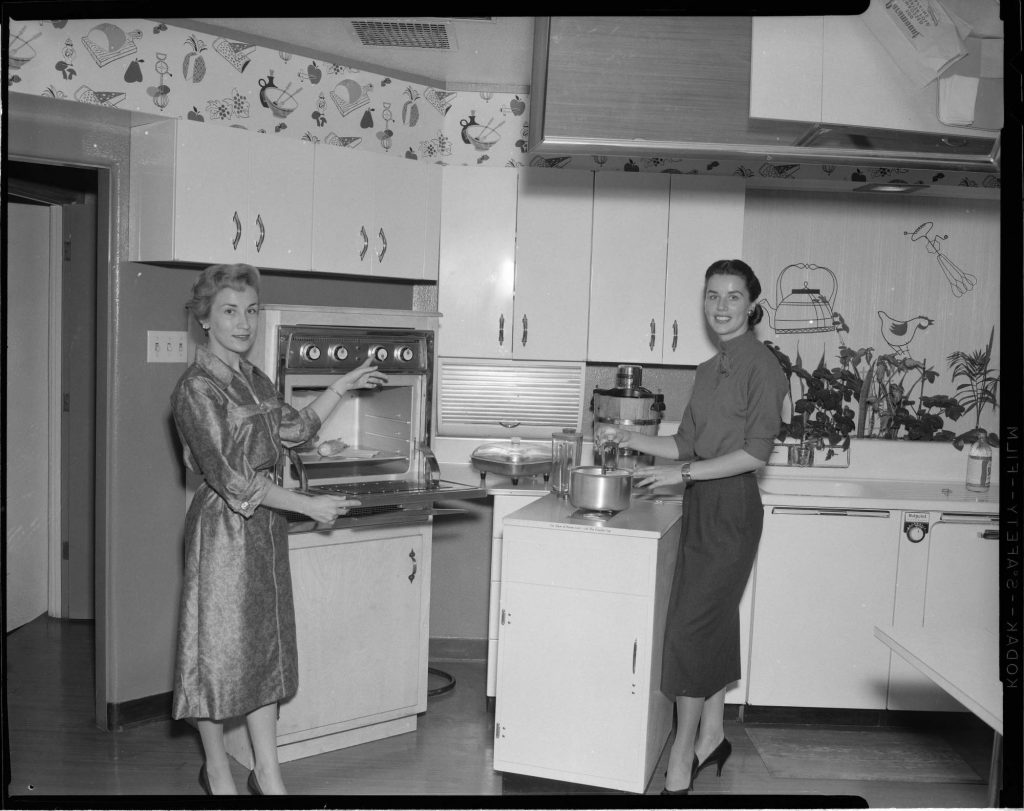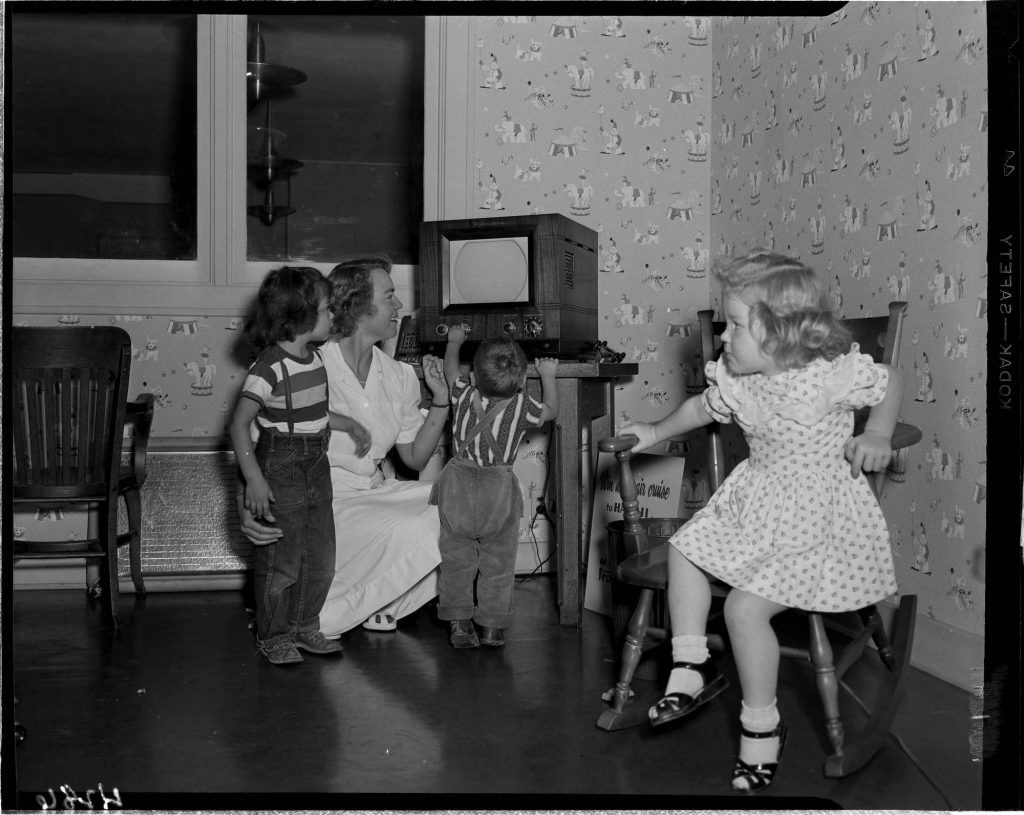Shopping Center
Shopping Center, 1958. Moving Images Relating to U.S. Foreign Policy and Foreign Relations, compiled 1911 – 1972. Record Group 59: General Records of the Department of State. National Archives and Records Administration.
Background
The increase in marriages and births after World War II led to a greater demand for homes and items for the home. In the first four years after the war, Americans moved into over one million new homes annually. Spending on furniture and appliances increased by 240%. Each year, American families bought millions of cars, refrigerators, stoves, and televisions. Not everyone could afford the most expensive items. However, data shows that spending on items for the home rose not only among upper- and middle-class families, but also among lower-income families. Most home products were marketed to women. On average, wives made 75% of all the purchases for her family.
Post-war consumerism reflected the traditional values promoted by politicians and popular culture. The American home was at the center of post-war stability. And it was a woman’s duty to create a comfortable and safe home for her husband and children.
About the Image
The film shows a suburban shopping center. Shopping centers were designed for convenience. Large parking lots accommodated hundreds of families, each with their own car. Many stores together in one place allowed housewives to complete all of their shopping in one quick trip.
These photographs were promotional images for Southern California Edison, an electricity supply company. Southern California Edison promoted electric appliances because homes with more appliances had higher electric bills. Both images present women as the primary consumers and users of home appliances.
The second image includes a television. The television was one of the most popular home appliances in the 1950s. It replaced the radio as a family’s primary source of entertainment and information.
Vocabulary
- appliances: A piece of equipment that helps with tasks in the home.
- consumerism: A society’s emphasis on purchasing new goods.
- housewife: A married woman whose primary responsibility is taking care of the home and family.
- post-war: Referring to the period after World War II.
- shopping center: An indoor or outdoor area with many stores that includes a parking lot for easy access.
Discussion Questions
- What kinds of products are for sale in these images? What does this tell you about suburban households in the 1940s and 1950s?
- Why do you think suburban families liked shopping centers so much? What does this tell you about life in the suburbs?
- Who do you think is the primary audience for the two photographs? Why do you think so?
- Why is it significant that wives made 75% of the purchases for their families? What does this tell you about a wife’s power and its limits?
Suggested Activities
- APUSH Connection: 8.4: Economy after 1945
- Expand students’ understanding of American consumerism by connecting this resource to the Kitchen Debates.
- Deepen students’ exploration of life in suburban America by examining these resources in conjunction with the photographs of suburban and urban housing and the life story of Betty Friedan.
- Connect these resources to the photographs of flappers in the 1920s. Consider the differences between these two perspectives on American women’s consumerism in the 20th century.
- Advertisements for appliances have almost always targeted women. Compare the two photographs to the Christmas-time advertisement for electrical appliances in the Progressive Era.
Themes
WORK, LABOR, AND ECONOMY; AMERICAN CULTURE; DOMESTICITY AND FAMILY








